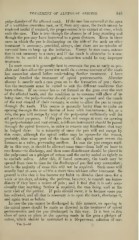Page 935 - My FlipBook
P. 935
TREATMENT OF ALVEOLAR ABSCESS. 945
pulp-chamber of the affected tooth. If the case has occurred at the apex
of a worthless crownless root, or if, from any cause, the tooth cannot be
rendered useful if retained, the proper course is to extract at once, which
ends the case. This is true though the abscess be of long standing and
though the pus may have burrowed to a great distance. Even in those
cases in which the pus is discharging on the side of the neck no other
treatment is necessary, provided, always, that there are no spiculse of
necrosed bone to keep up the irritation. Except in rare cases, extrac-
tion is not necessary to a cure ; and if the tooth is otherwise in a con-
dition to be useful to the patient, extraction would be very improper
treatment.
In acute cases it is generally best to evacuate the pus as early as pos-
sible and then allow the parts rest until the extreme soreness of the tooth
has somewhat abated before undertaking further treatment. I have
already detailed the treatment of apical pericementitis. Alveolar
abscess is merely such a case gone on to the formation of pus ; there-
fore the treatment must be varied to suit the different conditions that
have arisen. If no tumor has as yet formed on the gum over the root
of the affected tooth, and the condition as to soreness will allow of its
being done, the pulp-chamber should at once be opened and the canals
of the root cleared of their contents, in order to allow the pus to escape
through the tooth. This course is generally better than to make an
for, as a
opening through the outer lamina of bone with instruments ;
rule, the pus will escape by way of the pulp-canal sufficiently well for
all practical purposes. If the pus does not escape at once on opening
the pulp-chamber and root-canals, a delicate instrument should be passed
through the apical foramen, in order to remove any hindrance that may
be lodged there. In a minority of cases the pus will not es/3ape by
this route, although the apical orifice may be open—for the reason,
probably, that some part of the tissue of the apical space covers the
foramen as a valve, preventing outflow. In case the pus escapes read-
ily in this way, it should be allowed some time—from half an hour to
two hours—to discharge, and then some disinfectant should be placed in
the pulp-canal on a pledget of cotton and the cavity sealed so tightly as
to exclude saliva. After this, if found necessary, the tooth may be
opened from time to time for the discharge of pus that may accumulate;
but in the majority of cases this will not be required. Such cases will
usually heal at once or within a short time without other treatment. So
general is this that it has become my habit to dismiss these cases for a
week or ten days, advising the patients, however, to consult me imme-
diately if they have a return of pain ; and I find that it is only occa-
sionally that anything further is required, the case being well at the
next visit of the patient. If pain should recur, it is because more pus
has collected, and all that is necessary is to open the tooth, discharge it,
and again treat as before.
In case the pus cannot be discharged in this manner, an opening to
the apical space should be made as directed in the treatment of apical
pericementitis and the pus discharged in this way. It is best in this
class of cases to place in the opening made in the gum a pledget of
cotton, which should be moistened in a 95-per-cent. solution of car-
VoL. I.—60


